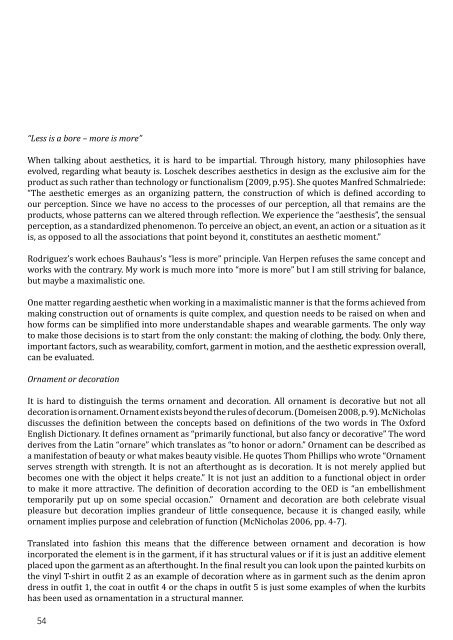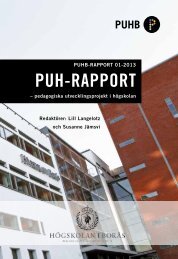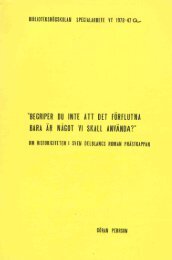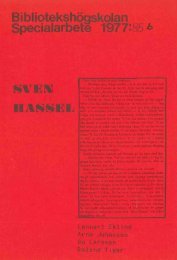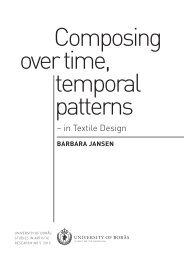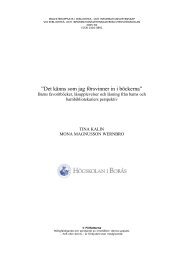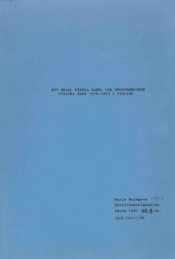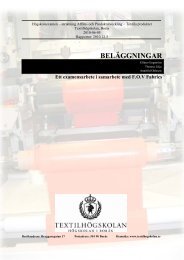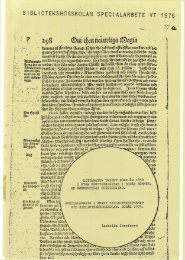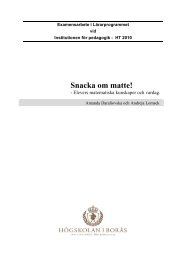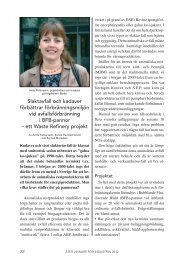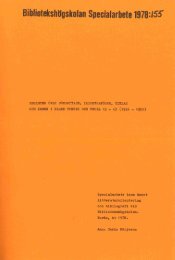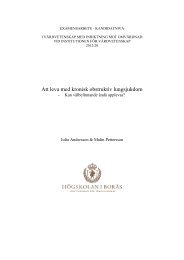KURBITCH! - BADA
KURBITCH! - BADA
KURBITCH! - BADA
Create successful ePaper yourself
Turn your PDF publications into a flip-book with our unique Google optimized e-Paper software.
“Less is a bore – more is more”<br />
When talking about aesthetics, it is hard to be impartial. Through history, many philosophies have<br />
evolved, regarding what beauty is. Loschek describes aesthetics in design as the exclusive aim for the<br />
product as such rather than technology or functionalism (2009, p.95). She quotes Manfred Schmalriede:<br />
“The aesthetic emerges as an organizing pattern, the construction of which is defined according to<br />
our perception. Since we have no access to the processes of our perception, all that remains are the<br />
products, whose patterns can we altered through reflection. We experience the “aesthesis”, the sensual<br />
perception, as a standardized phenomenon. To perceive an object, an event, an action or a situation as it<br />
is, as opposed to all the associations that point beyond it, constitutes an aesthetic moment.”<br />
Rodriguez’s work echoes Bauhaus’s “less is more” principle. Van Herpen refuses the same concept and<br />
works with the contrary. My work is much more into “more is more” but I am still striving for balance,<br />
but maybe a maximalistic one.<br />
One matter regarding aesthetic when working in a maximalistic manner is that the forms achieved from<br />
making construction out of ornaments is quite complex, and question needs to be raised on when and<br />
how forms can be simplified into more understandable shapes and wearable garments. The only way<br />
to make those decisions is to start from the only constant: the making of clothing, the body. Only there,<br />
important factors, such as wearability, comfort, garment in motion, and the aesthetic expression overall,<br />
can be evaluated.<br />
Ornament or decoration<br />
It is hard to distinguish the terms ornament and decoration. All ornament is decorative but not all<br />
decoration is ornament. Ornament exists beyond the rules of decorum. (Domeisen 2008, p. 9). McNicholas<br />
discusses the definition between the concepts based on definitions of the two words in The Oxford<br />
English Dictionary. It defines ornament as “primarily functional, but also fancy or decorative” The word<br />
derives from the Latin “ornare” which translates as “to honor or adorn.” Ornament can be described as<br />
a manifestation of beauty or what makes beauty visible. He quotes Thom Phillips who wrote “Ornament<br />
serves strength with strength. It is not an afterthought as is decoration. It is not merely applied but<br />
becomes one with the object it helps create.” It is not just an addition to a functional object in order<br />
to make it more attractive. The definition of decoration according to the OED is “an embellishment<br />
temporarily put up on some special occasion.” Ornament and decoration are both celebrate visual<br />
pleasure but decoration implies grandeur of little consequence, because it is changed easily, while<br />
ornament implies purpose and celebration of function (McNicholas 2006, pp. 4-7).<br />
Translated into fashion this means that the difference between ornament and decoration is how<br />
incorporated the element is in the garment, if it has structural values or if it is just an additive element<br />
placed upon the garment as an afterthought. In the final result you can look upon the painted kurbits on<br />
the vinyl T-shirt in outfit 2 as an example of decoration where as in garment such as the denim apron<br />
dress in outfit 1, the coat in outfit 4 or the chaps in outfit 5 is just some examples of when the kurbits<br />
has been used as ornamentation in a structural manner.<br />
Context<br />
A recurring discussion about my work has been in which context it is taking place. It has been hard for<br />
others to see it in a commercial setting and my aim has never been to position in that field. I can see a<br />
possible use for my work within stage and performance, the garments could be used in a music video<br />
for example. My goal for this collection is also to not only make an editorial photo-shoot but also to<br />
work with film. I think it would be interesting to take my collection one step further and present it in<br />
a scene and create a holistic experience. I want to create a fashion fantasy that pushes the boundaries<br />
for conventional thinking.<br />
When talking about context I also think you can se parallels between this collection and Japanese<br />
street style Kawaii. Cute or Kawaii began with the young in Japan during the 1970’s. (Clark 2012, pp.<br />
373-374). It was soon picked up by brands such as Sanrio who is the maker of the iconic Hello Kitty.<br />
Other styles as the “Lolitas”, with its bows, frills and laces, all in pink, followed. Japanese subculture<br />
is full of different styles extreme in expression. Fashion, popular culture, street style, garment, image,<br />
music are so combined that distinctions of “high” and “low” become meaningless.<br />
Within the genre it is common to build your style upon a character, or more or less be that character.<br />
Like the Gothic/Punk music duo Hitomi Yoshizawa and Rika Ishikawa, or Hangry and Angry, who like<br />
Hello Kitty also is animated cats origins from comic-books. As I see my collection, I have a character<br />
in mind. When starting to communicate about the expression that I searched for it was hard for me to<br />
describe it, a description that recurred was “Angry My Little Ponys on speed”. It is glittery and pink,<br />
ornamental and feminine but it is also angry and provocative, strong and daring. This is a revolt, a<br />
statement as a contrary to modernistic thinking and aesthetics, but also against what I consider an<br />
overly stereotypical view of feminism. It could be seen as an expression for the new Gaga-feminism.<br />
Gaga-feminism<br />
Lady Gaga is a symbol for a new kind of feminism (Halberstam, 2013). She is a master of media manipulation,<br />
a sign of a new world disorder, and a loud voice of different arrangement of gender, sexuality,<br />
visibility and desire. We can use the world of Gaga to question new femininities. This punk feminism<br />
hits at a future and gestures toward new forms of revolt. Gaga feminism tracks a version of feminism<br />
that will not settle for banal accounts of women striking out for independence and becoming powerful<br />
in the process. This version of feminism are not “becoming women” in the sense of coming to<br />
consciousness, they are unbecoming women in every sense – they undo the category, they play with it,<br />
take it apart like a car engine and then rebuild it so that it is louder and faster.<br />
54 55


